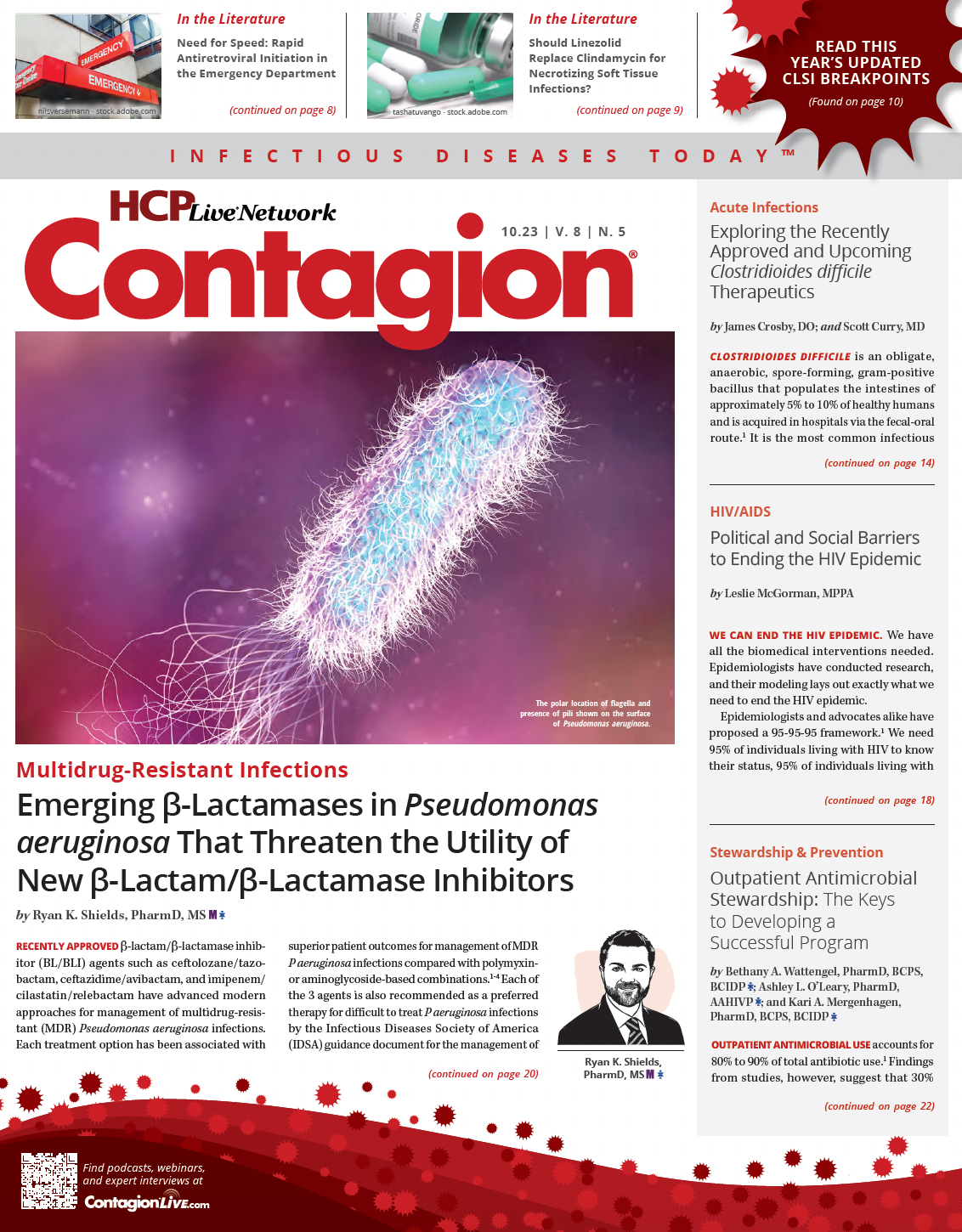To the dismay of many, COVID-19 is still among us. Nearly 4 months after the US federal government ended the public health emergency (PHE) declaration,1 new cases and hospitalizations are rising as they have risen every summer since the beginning of the pandemic.2 For those following the scant data available, this wave, due to more transmissible new variants,3 comes as no surprise.
Nothing miraculous happened on May 11, 2023.1 It was an administrative decision. Although ending the PHE was destined to happen, the decision seemed premature to some and long overdue for others. As with any divisive issue, the weeks that followed saw social media swirling with reactions. For public health professionals, the decision to end the PHE was epidemiologically meaningful in that it affected resources for testing, personal protective equipment, vaccines, and the infrastructure required for accurate and timely data on the virus.
Among those who celebrated the end of the PHE, there has been consistent misuse of many (now well-known) terms in the public health lexicon, including lockdowns, mandates, and closures. In some cases, the misuse of these terms was more than likely accidental. But in many cases, the misuse appealed to individuals’ emotions in a deliberately provocative way. Posts on social media, usually originating from politically motivated sources, seem to refer to any public health mitigation as a lockdown or a sign of more lockdowns coming. Regardless of the intention, the misuse of public health terminology has caused an uptick in online misinformation.
Cut to the early summer’s seasonal respite, which had individuals thinking that COVID-19 was out of sight, out of mind. But as students across the country go back to school, outbreaks of COVID-19 are starting to reappear.4 It does not help that protections against COVID-19 in schools are few; the COVID-19 vaccine is not a requirement for any child to be enrolled in any school district, most states have not provided proper indoor ventilation solutions,5 and mask wearing has become mostly voluntary in the context of schools and classrooms. With fewer mitigation efforts, less than a month into the school year, 3 school districts have had to cancel in-person learning because of “drastic drops in student and teacher attendance attributed to COVID-19 and other illnesses.”6 It’s likely that more school closures will follow but not because of the misinformation that is currently being spread about them online. Revisionist history of the COVID-19 pandemic prevails on social media and certain mainstream media outlets with suggestions that we “never needed to lock down,” which furthers the myth that the United States had a true lockdown and discounts the fact that at the beginning of the COVID-19 pandemic, we had no vaccines, no known treatments, and a deadly virus circulating.
What You Need to Know
The end of the COVID-19 public health emergency declaration in the United States led to the misuse of terms like "lockdowns," "mandates," and "closures" in public discourse, which has contributed to the spread of misinformation.
As students return to school, outbreaks of COVID-19 are occurring due to minimal protections in place. The COVID-19 vaccine is not mandatory for students, many states lack proper indoor ventilation solutions, and mask-wearing in schools is often voluntary.
Using precise language when discussing public health measures and policies, such as lockdowns and mandates, is crucial for increasing public health literacy and combating the spread of misinformation.
One such rapidly circulating claim about reinstated lockdowns has recently gained momentum on platforms such as social media and cable news. Although a handful of companies and universities have considered increasing mitigations amid the surge (eg, encouraging mask wearing to curb the spread of COVID- 19), there is no indication that the federal government will implement any nationwide restrictions related to COVID-19, let alone a lockdown. The source of the erroneous claims seems to be an episode of The Alex Jones Show, in which Jones claims that an anonymous “high-level manager” whistleblower at the US Transportation Security Administration warned that new mask mandates were imminent with a return to “full [COVID-19] protocols” in effect by December.7
Before we go further on how we can discuss COVID-19 policies without causing more distrust, the term lockdown deserves special attention. The United States never enacted a lockdown. The term has been used colloquially to refer to the days in which states—not the federal government—issued varying shelter-in-place (SIP) orders with minimal enforcement. It has also been manipulated and used as a dog whistle to discredit and demonize public health mitigation efforts in the spirit of autonomy, individualism over community, and liberty, thus breathing new life into an ideology captured in the wildly controversial Great Barrington Declaration.8
There is no denying that SIP orders disrupted day-to-day life, the way we gathered, and the way businesses functioned, but a true lockdown such as those that took place in countries such as China,9 Australia,10 or New Zealand11 never occurred in the United States during the COVID-19 pandemic. In fact, a tool developed by the Blavatnik School of Government at the University of Oxford12 in the United Kingdom compared pandemic policies globally and found that within 2 months of the pandemic being declared, the United States was among the least strict places in the world. Additional research published by the Royal Society, which analyzed thousands of studies to determine the effectiveness of nonpharmaceutical interventions (NPIs)—measures such as isolation, quarantine, border controls, mask mandates, testing, contact tracing, and lockdowns—found that NPIs were broadly effective in reducing the transmission of COVID-19.
It may seem easy to dismiss a claim by a person such as Alex Jones, who was recently found guilty in a court of law for spreading harmful misinformation. However, the dystopian images of empty streets, stories of highly monitored and restricted movement, and rumors of government control go viral and ignite fury and panic.
To be clear, this is the intended outcome for the most prolific misinformers. This dynamic fuels what researchers have called infodemics, wherein an overabundance of information sows distrust, making it extraordinarily difficult to access reliable information and distinguish between trusted messengers and those who intend to incite fear.
The phenomenon of infodemics has been studied for years, but a PHE such as the COVID-19 pandemic was the type of global disrupter to accelerate both an infodemic and the deterioration of public trust. The widespread use of social media and the rapid sharing of information online have exacerbated the challenge of managing infodemics, because false or misleading information can quickly go viral and reach a wide audience before accurate information can catch up.
Trust in public health institutions such as the CDC has plummeted since 2020. It’s not just the CDC; doctors, researchers, politicians, and even the scientific method have come under scrutiny. Evolving data, 50 different sets of policies for 50 different states, and the emergence of armchair experts fueled a historic level of confusion and distrust. The Edelman Trust Barometer 2022 Special Report: Trust and Health noted that distrust fuels polarization.13 And in a polarized community, words have enormous power.
So how can we talk about COVID-19 without causing more trust to be lost? We need to use the right language.
Using precise language when discussing or reporting categories of public health mitigations such as lockdowns, mandates, or school closures helps increase public health literacy. It is crucial that messaging is shared in an easily understandable manner so that it is less likely to be misinterpreted. In an infodemic, inaccurate information can spread rapidly. Precise language can help prevent the unintentional amplification of misinformation by clearly distinguishing between verified facts and unverified claims. Using appropriate terminology with proper explanations from reliable sources can increase the public’s trust and the trustworthiness of messengers.
Accurate depictions of mitigation efforts can defuse emotional language and appeal to reason, making it harder for false information to evoke strong emotional responses. In periods of crisis and emergency, misinformation can form a dominant narrative. Precise language can help create a counternarrative based on evidence, allowing the truth to emerge and spread instead. By using precise language, individuals, organizations, and media outlets can combat the spread of misinformation and contribute to a more informed and resilient society.
References
- Notice on the continuation of the national emergency concerning the coronavirus disease 2019 (COVID-19) pandemic. The White House. February 10, 2023. Accessed August 29, 2023 https://www.whitehouse.gov/briefing-room/presidential-actions/2023/02/10/notice-on-the-continuation-of-the-national-emergency-concerning-the-coronavirus-disease-2019-covid-19-pandemic-3/
- Trends in United States COVID-19 hospitalizations, deaths, emergency department (ED) visits, and test positivity by geographic area. Centers for Disease Control and Prevention. March 28, 2020. Accessed August 29, 2023https://covid.cdc.gov/covid-data-tracker/#trends_weeklyhospitaladmissions_select_00
- Variant proportions. Centers for Disease Control and Prevention. March 28, 2020. Accessed August 29, 2023 https://covid.cdc.gov/covid-data-tracker/#variant-proportions
- The Biobot network of wastewater treatment plants. Biobot Analytics. Accessed August 29, 2023https://biobot.io/data/
- Mandavilli A. Covid closed the nation’s schools: cleaner air can keep them open. New York Times. August 27, 2023. Accessed August 29, 2023https://www.nytimes.com/2023/08/27/health/schools-indoor-air-covid.html
- Kekatos M. School districts in Kentucky, Texas cancel classes amid ‘surge’ of illnesses including COVID. ABC News. Accessed August 29, 2023. https://abcnews.go.com/Health/school-districts-kentucky-texas-cancel-classes-amid-surge/story?id=102561169
- McDonald J. No support for viral claim that COVID-19 ‘lockdowns’ are returning this fall. FactCheck.org. August 25, 2023. Accessed August 29, 2023 https://www.factcheck.org/2023/08/scicheck-no-support-for-viral-claim-that-covid-19-lockdowns-are-returning-this-fall/
- Twitter. @DrJBhattacharya. Let the new lockdown wars begin. It’s not too late to sign the @gbdeclaration. Just say no to lockdowns. gbdeclaration.org. August 27, 2023. Accessed August 29, 2023. https://twitter.com/DrJBhattacharya/status/1695943093751861598
- Wu H. Sealed in: Chinese trapped at home by coronavirus feel the strain. Reuters. February 22, 2020. Accessed August 29, 2023. https://www.reuters.com/article/us-china-health-quarantine-idUSKCN20G0AY
- Cave D. Has Covid cost Australia its love for freedom? New York Times. September 23, 2021. https://www.nytimes.com/2021/09/23/world/australia/covid-lockdowns-freedom.html
- New Zealand to end quarantine stays and reopen its borders. Associated Press. February 2, 2022. Accessed August 29, 2023. https://apnews.com/article/coronavirus-pandemic-health-new-zealand-4513b42df9301b9baacb874c7b91cb30&sa=D&source=docs&ust=1693206520165956&usg=AOvVaw1nX-Pu6WZWo1pVhl3kdk7I
- Hale T, Petherick A, Anania J, et al. Variation in Government Responses to COVID-19. University of Oxford Blavatnik School of Government; 2023. Blavatnik School of Government working paper 2020/032. Version 15. June 27, 2023. Accessed August 29, 2023 https://www.bsg.ox.ac.uk/sites/default/files/2023-06/BSG-WP-2020-032-v15.pdf
- 2022 Edelman Trust Barometer Team. Edelman Trust Barometer 2022 Special Report: Trust and Health. Edelman; 2022. Accessed August 29, 2023 https://www.edelman.com/trust/22/special-report-trust-in-health


